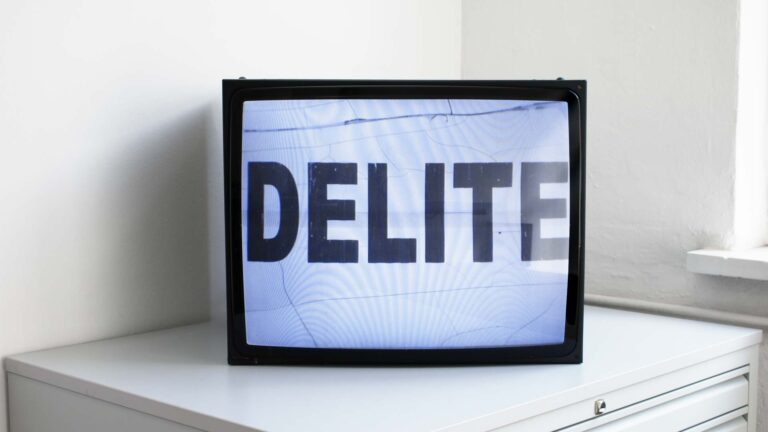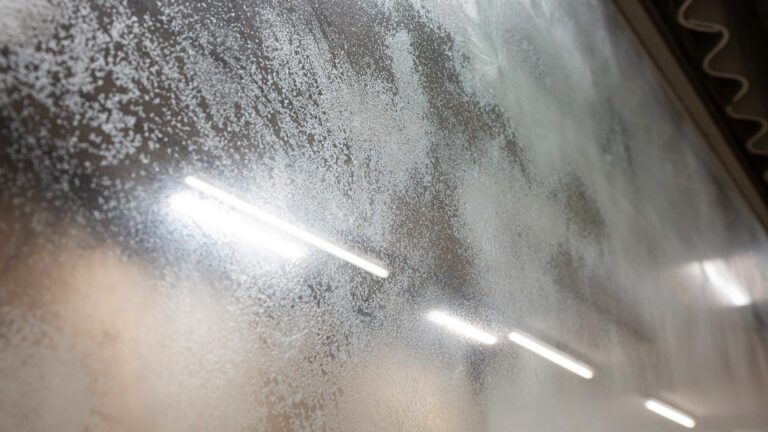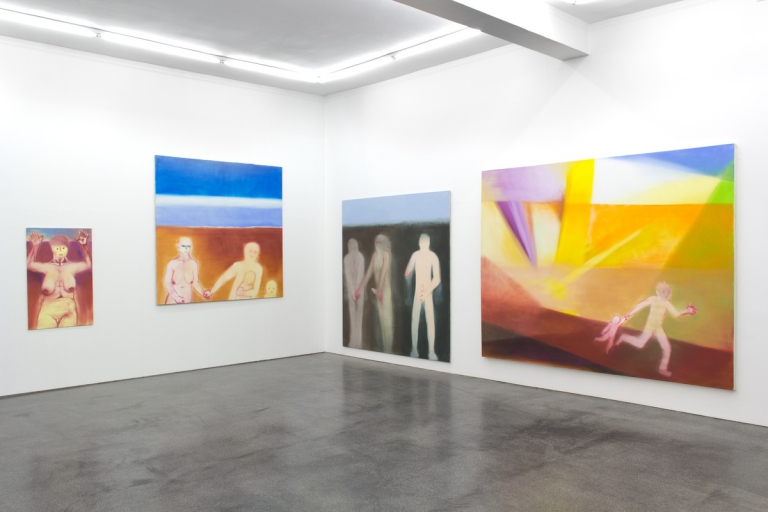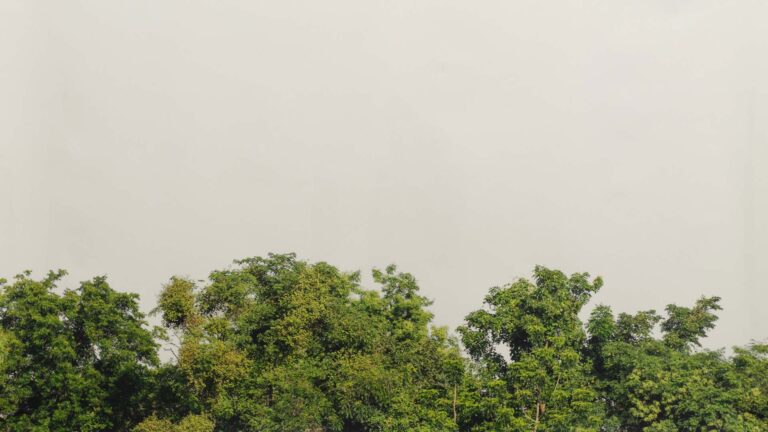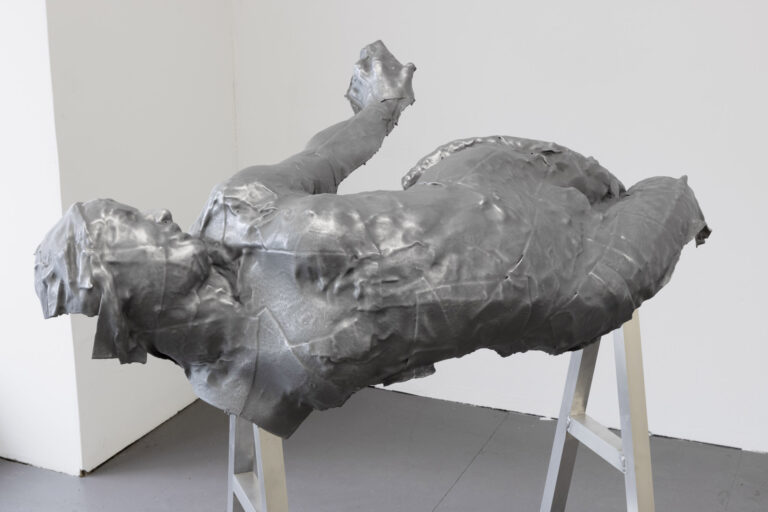Artist: Catharina Szonn
Exhibition title: Trouble in Paradise
Venue: Kunstverein Konstanz, Konstanz, Germany
Date: August 1 – September 27, 2020
Photography: Fenja Cambeis / all images copyright and courtesy of the artist and Kunstverein Konstanz
Catharina Szonn understands her artistic work as a confrontation with technological and social conditions of our present, in which she usually draws on past cultural phenomena in order to leave traces of revitalizing future questions in their obvious transience.
The main protagonist of her exhibition at the Kunstverein Konstanz is a carpet paternoster, a mas-sive machine, 700 kg in weight, almost 5 meters long, rising over 2 meters into the air, functional, but in a digitalized production world still a traditional object. Szonn contrasts the sluggishness of a disused machine with the lightness of inflatable plastic objects, an easily available, brightly colo – red paradise that can quickly run out of air. This contrasting arrangement of objects is set in the mechanically possible movement, the circulation of the rollers. But it is not just a piece of carpet carefully wrapped around the rollers for customer presentation, rather the artist initiates an uncon-trollable choreography in which the objects involved are subjected to an unforeseeable process of wear and tear and become performers of their own wear and tear.
What is the artist concerned with? Possibly about creating an image of the hardly controllable complexity of our social life? Too many objects, an overload of the wrong materials, all the plastic trash that is difficult to get out of the world and its oceans – but at the same time so fragile that a pre-digital machine sets processes of dissolution and crushing in motion, the outcome of which we are unable to foresee – whether at the end of the exhibition the empty rollers will turn around and re-stage the simple industrial beauty of this carpet paternoster with its cogwheel drive? Nobody knows where this constant, self-sufficient circular movement will lead to at the end of the exhibiti-on…
Spectacular moments arise for the spectator, in which one has to decide whether to follow the unstoppable rise and fall of the machine, its destructive power without empathy, with amusement or growing restlessness.
It is obvious that trouble reigns everywhere in Catharina Szonn‘s installation.
But what is paradise here?
The brightly colored plastic objects, the bath toys, the party decoration trash, designed for quick consumption, the effortless staging? A world of objects which, for all its superficiality, also suggests the participation of individuals in positively connoted events, children‘s birthdays, bathing and par-tying fun.
Or is the massive machine more of a paradisiacal phenomenon that traces back to a pre-digital age of craftsmanship when the hammer was still helping? A machine, as it has long outlived its time, as long as it has not been constructed and consumed? The analog counter-criticism, a sym-bol of a return to a manageable value context, the evocation of a new clarity, the very simple life?
Catharina Szonn does not answer such questions, it is up to the individual spectator of this spec-tacle of destruction to decide to what extent he or she wants to follow the tracks that the artist lays, not least with poetic text fragments, shining in a loop of several LED tapes: „Waiting for what never happens…tomorrow will be a better day… walking death to future…we are here to make everything right…“.
The artist has also worked on spatial installation changes away from the central machine room: In the small skylight room, mysteriously dark, acoustically appealing due to the constant splashing of water (which turns out to be the snot nose of a smiley creature), we find strangely alienated pla – stic animals in zoo-cages. Are they kept captive as supplies? At the same time, this narrow space also functions as a surveillance centre, documenting the innermost processes of the mechanical destruction process in the adjacent room by camera and transmitting all the details of the wear and tear, the merciless circular movement of the carpet paternoster rollers, which we, the spec-tators, cannot even see or recognise.
The corridor gallery, the usual access route to the large skylight hall, is furnished as a slightly dar-kened transit room, a narrow sluice to the central event. At the same time, the corridor sluice also marks the retreat route – the illuminated panel addresses the viewer directly in a twitching word construction: „You are on the right way – as part of the problem“.
At a time when supposedly safe things are lost in imponderability, Trouble in paradise asks what other ideas of paradise might be right, when the trouble has long since begun.














